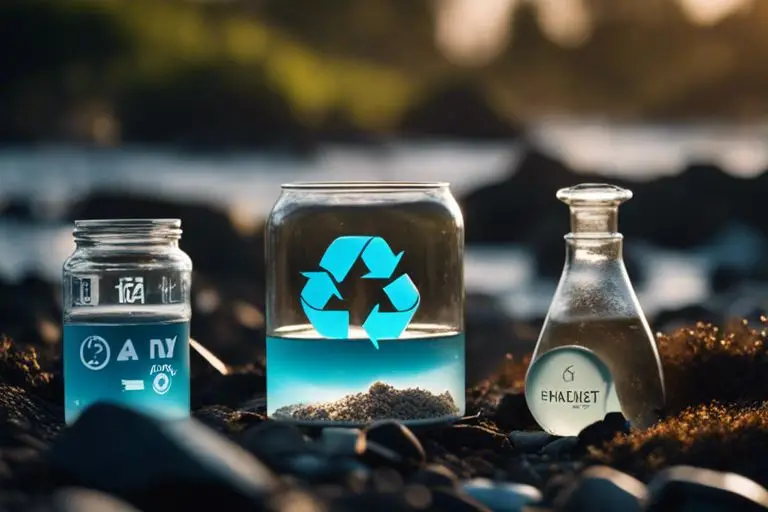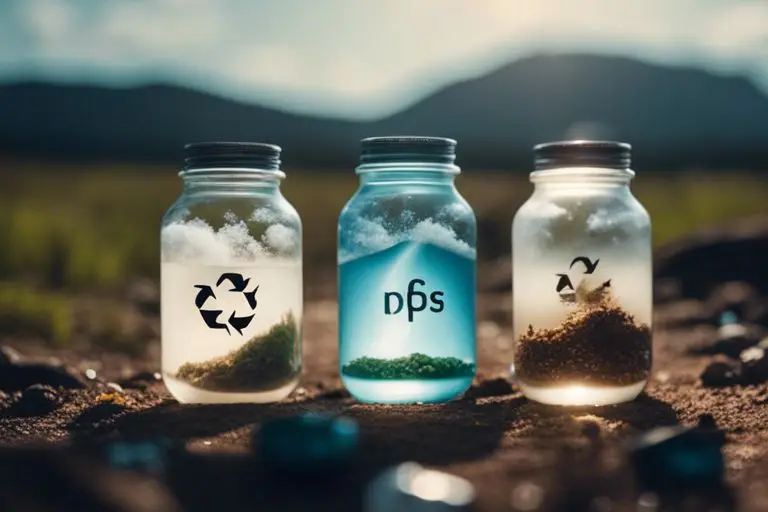Most of us interact with plastic on a daily basis, from food packaging to household items. However, not all plastics are created equal when it comes to their environmental impact. It's crucial to understand the differences between various types of plastic to make informed choices that can help reduce plastic pollution and its detrimental effects on our planet. In this blog post, we will explore into the environmental impact of each type of plastic, highlighting the most important factors that contribute to their sustainability or harm to our ecosystem.
Key Takeaways:
- Plastic type matters: Different types of plastic have varying levels of environmental impact.
- Single-use plastics: Single-use plastics like PET and polystyrene are widely used but have a high environmental impact due to their non-biodegradable nature.
- Choosing wisely: Opting for reusable and recyclable plastics such as HDPE and PP can significantly reduce the environmental impact of plastic usage.

The Lifecycle of Plastics
Any plastic item we use has a significant environmental impact, from production to disposal. According to the Environmental toll of plastics - EHN, it's crucial to understand the entire lifecycle of plastics to grasp their true environmental cost.
Production and Raw Material Extraction
Production of plastics involves extracting raw materials like oil and natural gas. These processes contribute to carbon emissions and environmental degradation. The extraction of these resources can lead to deforestation, habitat loss, and pollution of air and water sources. Additionally, the production of plastics involves the use of chemicals that can be harmful to both human health and the environment.
Use and Consumer Behavior
Lifecycle of plastic continues with its use and consumer behavior, contributing to its environmental impact. Improper disposal of plastics, single-use habits, and lack of recycling exacerbate the pollution of oceans, landfills, and ecosystems. Consumers play a vital role in reducing plastic waste by opting for reusable alternatives, recycling properly, and supporting initiatives that promote sustainability.
Plus, it's crucial to prioritize products packaged in recyclable and sustainable materials and to support businesses that are committed to reducing their plastic footprint. By being mindful of our consumption and disposal habits, we can collectively work towards a healthier and cleaner environment.

Environmental Impact by Plastic Type
Impact of PET (Polyethylene Terephthalate)
Assuming you are aware of the environmental impact of each type of plastic is crucial. The impact of PET (Polyethylene Terephthalate) is significant as it is commonly used in the production of water bottles and food packaging. PET is recyclable, but if not disposed of properly, it can take hundreds of years to decompose, contributing to the pollution of oceans and landfills.
Impact of HDPE (High-Density Polyethylene)
One of the most common types of plastic, HDPE is known for its sturdy and versatile nature, used in various products from milk jugs to shampoo bottles. HDPE is considered relatively environmentally friendly as it is recyclable and has a lower risk of leaching harmful chemicals. However, improper disposal can still lead to pollution and harm to wildlife.
Polyethylene, with its high density and strength, makes HDPE a popular choice for packaging and container applications that require durability.
Impact of PVC (Polyvinyl Chloride)
Chloride. PVC, commonly found in pipes, flooring, and credit cards, has significant environmental implications. It is not easily recyclable and releases toxic chemicals when incinerated, posing risks to both human health and the environment. Its production also involves the use of chlorine, a hazardous substance that can have long-term negative effects on ecosystems.
This plastic type highlights the importance of sustainable alternatives and responsible disposal practices to minimize its environmental impact.
Impact of LDPE (Low-Density Polyethylene)
Polyethylene. LDPE, often used in plastic bags and shrink wraps, is lightweight and flexible. While it is considered a safer plastic in terms of leaching chemicals, its lightweight nature makes it prone to being easily dispersed into the environment. Proper recycling and waste management are crucial to prevent LDPE from contributing to pollution and endangering wildlife.
Impact of PP (Polypropylene)
On. PP is commonly used in food packaging, medicine bottles, and yogurt containers. It is a relatively safe plastic that is resistant to heat and chemicals, making it suitable for a wide range of applications. PP is also recyclable, but its high melting point can make it challenging to process, leading to lower recycling rates compared to other plastics.
Understanding the properties and environmental impact of PP can help in making informed choices towards a more sustainable future.
Impact of PS (Polystyrene)
Impact. Polystyrene, commonly known as Styrofoam, is a petroleum-based plastic used in disposable food containers, packaging materials, and insulation. It is not easily recyclable and often ends up in landfills or waterways, where it can persist for hundreds of years. The production and disposal of PS can release toxic chemicals into the environment, posing risks to wildlife and ecosystems.
Understanding the harmful effects of PS can drive the shift towards more eco-friendly alternatives and responsible waste management practices.
Mitigation and Alternatives
Not sure about the environmental impact of each type of plastic? Learn more about the different types of plastic and their impact on our environment in our blog post 7 Types of Plastic: How do they Impact our Environment?
Recycling and Its Effectiveness
Mitigation: Recycling is often seen as a solution to the plastic waste problem, but its effectiveness depends on several factors such as collection systems, sorting facilities, and market demand for recycled materials. Unfortunately, not all plastics are easily recyclable and the process itself requires energy and resources. It is vital for consumers to understand which plastics can and cannot be recycled to ensure proper disposal and reduce environmental impact.
Biodegradable and Bio-based Plastics
Biobased: As an alternative to traditional plastics, biodegradable and bio-based plastics are gaining popularity. These materials are derived from renewable resources like plants and are designed to break down more easily in the environment compared to conventional plastics. However, it is important to note that not all biodegradable plastics can degrade effectively in all environments, and proper disposal methods are crucial to avoid contamination.
Biodegradable: While biodegradable and bio-based plastics offer potential benefits in reducing plastic pollution, it is vital to ensure that they are managed effectively to achieve the desired environmental outcomes. Regulations and standards for biodegradable plastics are still evolving, highlighting the need for further research and development in this area.
Summing up
Following this discussion on the environmental impact of different types of plastic, it is evident that each type carries its own set of challenges. Single-use plastics like PET and PVC exhibit harmful effects on the environment due to their non-biodegradable nature and toxic emissions. On the other hand, biodegradable plastics offer a more sustainable solution but require proper disposal methods to realize their full benefits. It is crucial for us to be aware of the environmental impact of each type of plastic to make informed decisions and adopt more eco-friendly alternatives to protect our planet for future generations.
FAQ
Q: What is the environmental impact of each type of plastic?
A: Each type of plastic has a different environmental impact depending on its composition and how it is disposed of. Some common types of plastic, such as PET and HDPE, are more easily recyclable and have less of a negative impact compared to harder-to-recycle plastics like PVC and polystyrene. However, all plastics contribute to environmental pollution if not properly recycled or disposed of.
Q: How does plastic pollution affect the environment?
A: Plastic pollution has a devastating impact on the environment. When plastic is not disposed of properly, it often ends up in waterways, where it can harm marine life and contaminate ecosystems. Plastics take hundreds of years to decompose, leading to long-term pollution issues. Additionally, chemicals leached from plastics can enter the food chain, posing health risks to humans and wildlife.
Q: What can individuals do to reduce the environmental impact of plastics?
A: There are several steps individuals can take to minimize the environmental impact of plastics. These include reducing the use of single-use plastics, such as bags and straws, opting for reusable alternatives, recycling plastics whenever possible, and participating in clean-up efforts in local communities. By making environmentally conscious choices and advocating for policies that promote sustainable practices, individuals can help mitigate the impact of plastics on the environment.
